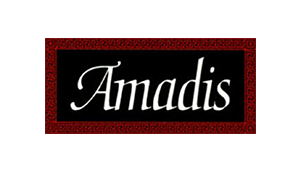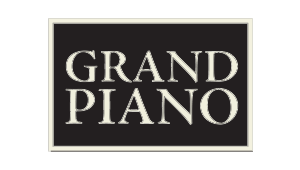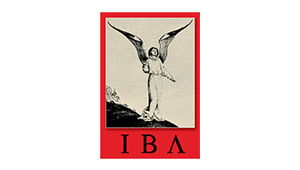Vaudeville
Verismo
Vespers
Vibraphone
Vibrato
Viol
Viola
Viola d’amore
Violin
Violone
Virginal
Vivace
Vocalise
Voice
Variation form involves the repetition of a theme in changed versions. It is possible to vary the melody, its rhythm and its harmony, or to vary by addition. Early variation forms include the chaconne and the passacaglia, originally dances based on variations on a simple repeated bass or chordal pattern. Later examples of variations include Elgar’s well-known ‘Enigma’ Variations and the Handel, Haydn and Paganini Variations of Brahms.
Vaudeville indicates a relatively simple form of French song or a theatrical entertainment using such songs, or songs borrowed from elsewhere and often satirical in intention. This enjoyed popularity in the later 17th century, soon finding a place in the Foires (Fairs) of Paris, from which came the Opéra-Comique, established in 1714 and drawing, now with some official support, on this tradition.
Operatic verismo (realism) reflected contemporary literary trends in Italy in the late 19th century. In opera it is seen in Mascagni’s opera Cavalleria rusticana (‘Rustic Chivalry’) and Leoncavallo’s Pagliacci (‘Actors’), which deal with relatively lower levels of society and conflicts that might, in this context, seem relatively mundane. The genre, if it can be so regarded, had an influence, at least, on Puccini, who amalgamated this new realism with more exotic settings.
Vespers is the evening service of the Divine Office, elements of which have proved suitable for more elaborate setting than the normal plainchant. Particularly notable in this respect is the 1610 compilation by Monteverdi for his published Vespers in Honour of the Blessed Virgin.
A vibraphone is a form of metallophone with resonators below its horizontally arranged metal bars and a mechanism to allow a vibrato effect, giving the instrument a characteristic resonance. It has been used for special effects by a number of 20th-century composers.
Vibrato is a technique of vibration used on various instruments and by singers, at one time used sparingly or not at all, but tending to over-use by performers anxious to conceal poor intonation.
Viols are bowed string instruments usually held downwards and therefore described as viole da gamba (‘leg-viols’), as opposed to instruments like the violin and its predecessors, held horizontally and described as viole da braccio (‘arm-viols’). Viols are made in various sizes, generally with six strings and with frets: lengths of gut tied round the neck and fingerboard of the instrument to show the position of the notes. Viols were the most important bowed string instruments from the 15th century, but were gradually superseded by instruments of the violin family, leaving only one form of double bass as a survivor. The revival of interest in earlier music has brought a marked revival in the fortunes of the viol, most recently in cinematic attention to the famous 17th-century player and composer Marin Marais. In the 16th and 17th centuries consorts or chests of viols (sets of matched instruments of different size and range) were much in use, often as a means of domestic music-making. The viol is often incorrectly referred to in English as a gamba, an etymological solecism.
The viola (= German: Bratsche; French: alto) is the tenor of the modern violin family, with a range that extends a fifth below that of the violin and starts an octave above that of the cello. The standard viola is held on the shoulder like a violin. Violas are built in various sizes and were at one time used for both the alto and tenor registers. Experiments were made, starting in the later 19th century, to produce an instrument of sufficient size to provide the desired resonance while remaining small enough to be manageable, and more recently a larger instrument, played downwards like a cello and not held horizontally like a violin, has been devised. Violas take the tenor part in the string section of the modern orchestra and in string quartets, while the solo concerto and duo sonata repertoire of the instrument, which began in the early 18th century but was relatively limited, was considerably enlarged in the 20th.
The viola d’amore, used principally in the 17th and 18th centuries, is a bowed instrument generally with seven bowed strings and seven sympathetic strings, tuned to vibrate in sympathy with the playing strings. The instrument has a peculiar resonance of its own and has a small but interesting modern repertoire.
The violin, a bowed instrument with four strings, is used to provide the soprano and alto parts in the string section of the modern orchestra and the string quartet. It was developed in something approaching its modern form in the 16th century, gradually coming to occupy an unrivalled position because of its remarkable acoustical properties and its versatility. Particular distinction was added by the great violin makers of Northern Italy and of the Austrian Tyrol, while the later 18th century brought gradual changes of construction of both bow and instrument to provide greater resonance.
The violone is the double bass of the viol family, although the word was once occasionally used with less accuracy to indicate the cello or any large viol.
The virginal (sometimes used in the plural, virginals) is a small harpsichord of varied shape and size. The word was used generally in England in the 16th and 17th century for instruments of this type, with a keyboard and a mechanism by which quills plucked the horizontally stretched strings. The etymology of the word is uncertain, although it allowed obvious scope for Elizabethan and Jacobean punsters.
Vivace (Italian: lively) is commonly used as an indication of tempo.
A vocalise is a vocal work, whether an exercise or something more musically substantial, that has no words. There is a well-known and frequently transcribed Vocalise by Rachmaninov, and vocalisation is also called for in an orchestral context by the chorus parts of ‘Neptune’ in Holst’s suite The Planets.
‘Voice’ is used technically in music to indicate a particular musical line, even if this is intended for an instrumentalist and not a singer. The American ‘voice-leading’ is the equivalent of the English ‘part-writing’, writing different parts or lines of music for simultaneous performance.
The waltz (= French: valse; German: Walzer), a dance in triple time, became the most popular of all ballroom dances in the 19th century, typified in Vienna by the compositions and performances of the Strauss family. As a purely instrumental form, the waltz provided an apt vehicle for composers from Chopin to Ravel.
The woodwind section of the modern orchestra includes flutes, oboes, clarinets and bassoons and their related instruments, although flutes are generally no longer made of wood. These instruments are all aerophones, blowing instruments, the sound produced by blowing across an aperture in the case of the flute, by the vibration of a single reed in the case of the clarinet, and by the vibration of double reeds in the case of the oboe and the bassoon.
The xylophone, a percussion instrument with sets of horizontally arranged wooden bars to be struck by wooden sticks is used by composers from the 19th century onwards for special effects, as in the Danse macabre of Saint-Saëns, with its dancing skeletons, and in Puccini’s opera Madama Butterfly.






























